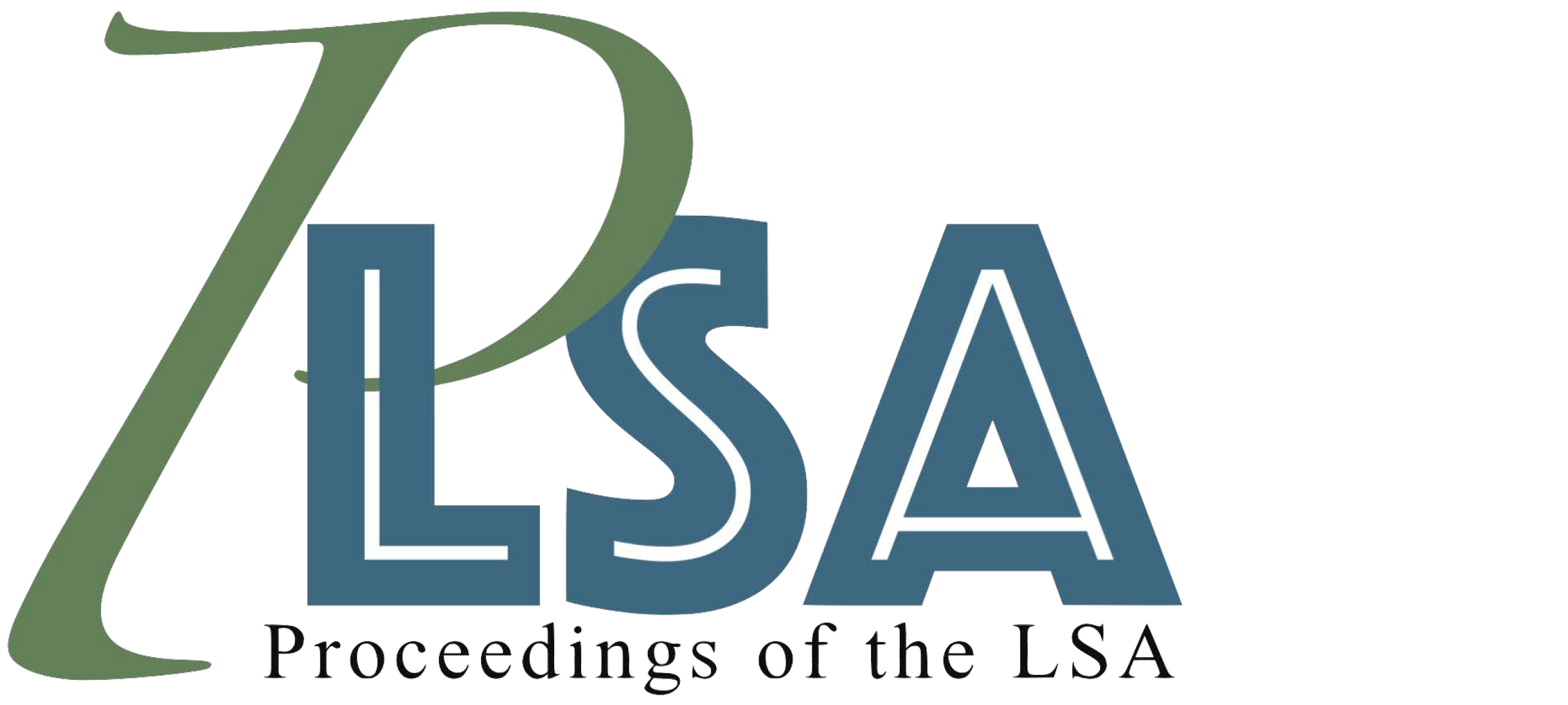Must "big" syllables carry stress in English?
DOI:
https://doi.org/10.3765/plsa.v10i1.5958Keywords:
full vowels, closed syllables, stress, English, perceptionAbstract
Two types of syllables with ambiguous stress-status are identified: open syllables with a full vowel adjacent to the primary stress (e.g. no.tá.tion) and closed syllables with a full vowel that occur non-adjacent to, but to the right of the primary stress syllable (e.g. cá.ra.van}). Both syllable types have a full vowel but need not be heavy; the latter type also has a coda consonant. These two segmental properties of syllables were separated into two "big" syllable shapes, [Cæ] and [Cəs]. Two perception studies were run in which these syllables were given the prosodic characteristics of unstressed syllables and placed in syllable strings where a listener would expect a stressed syllable given the otherwise alternating pattern of the string. Listeners also heard truly alternating strings, and strings with initial or final stress lapse without a big syllable as part of the stress lapse. It was found that unstressed open syllables with full vowels were highly confusable with a truly alternating pattern, whereas unstressed closed syllables were not. As both ambiguously-stressed syllable shapes under consideration involve a full vowel, our full vowel study gives support for the hypothesis that such syllables may not be stressed, and are confusable with stressed syllables because of their vowel quality.
Downloads
Published
Issue
Section
License
Copyright (c) 2025 Anya Hogoboom, Lulu Griffin

This work is licensed under a Creative Commons Attribution 4.0 International License.
Published by the LSA with permission of the author(s) under a CC BY 4.0 license.
